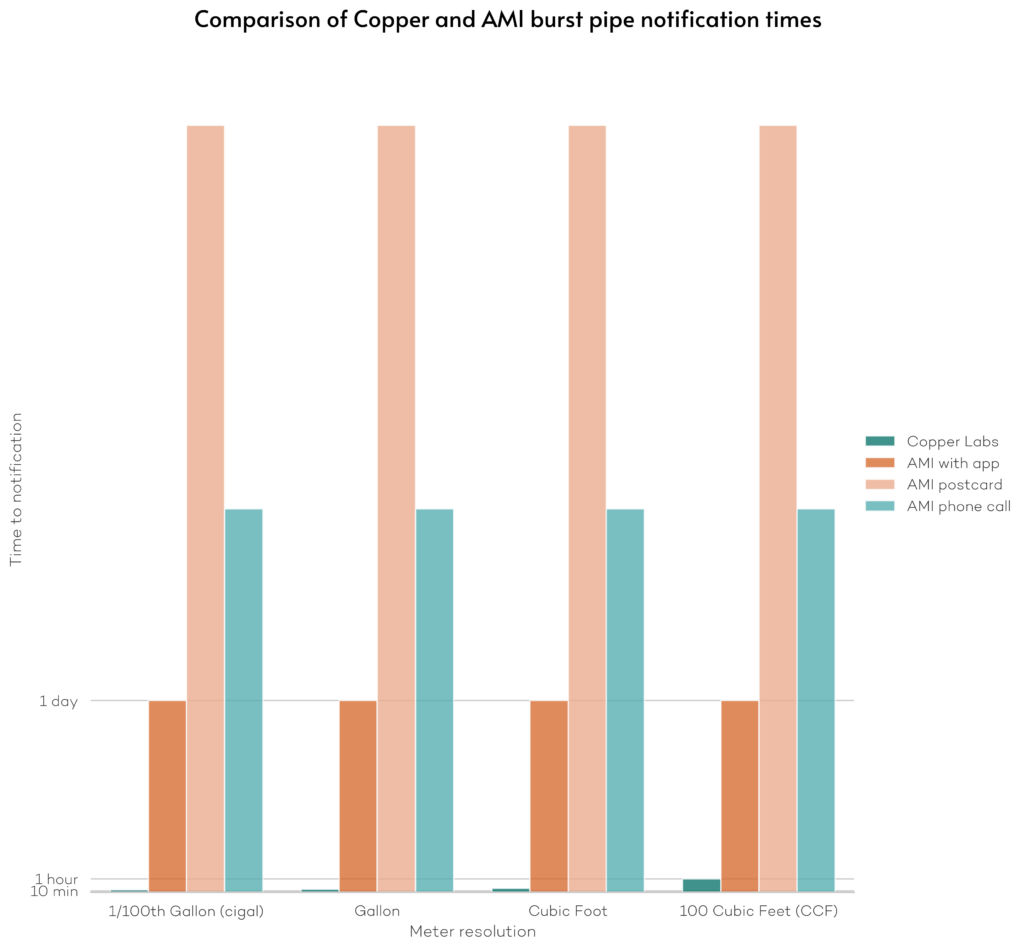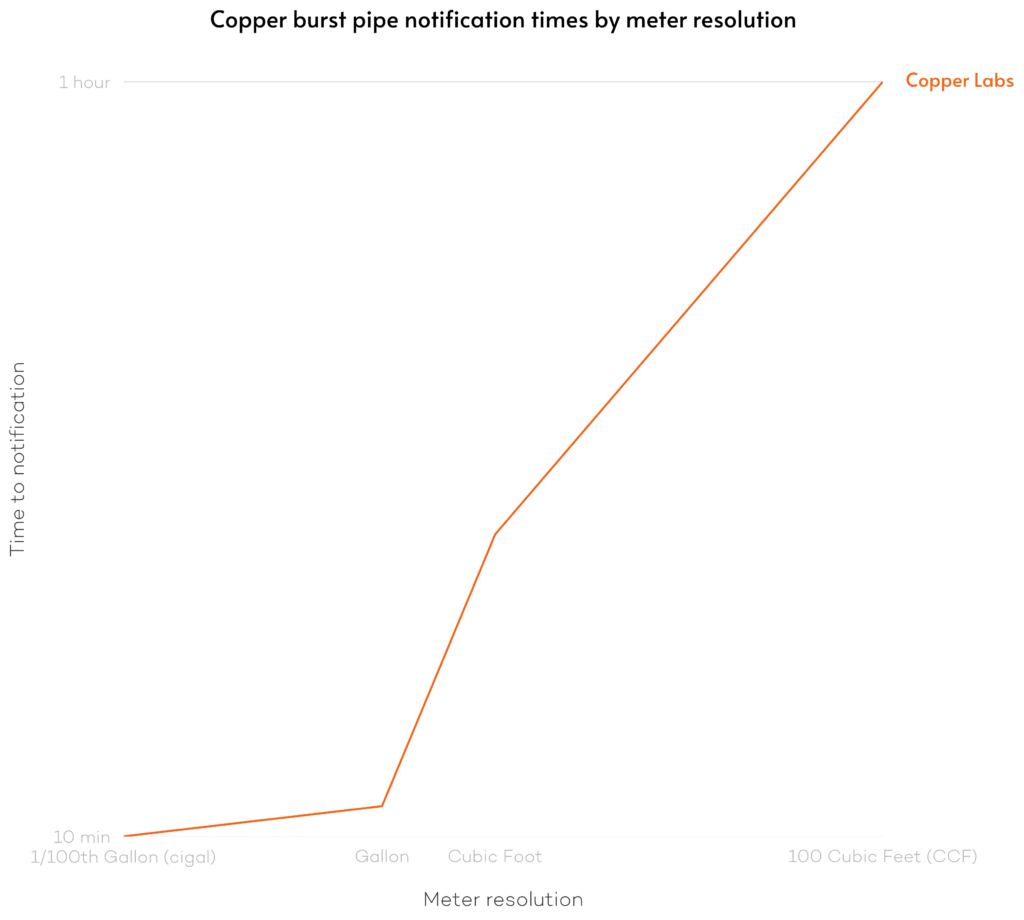Reducing water waste is more important than ever with historic climate change-induced droughts (like the Colorado River’s megadrought). Even without these dire circumstances, we don’t want to waste resources and customers don’t want to pay for water they’re not using. According to the EPA, 10% of homes leak more than 90 gallons of water per day. So identifying and addressing the large leaks in particular can go a long way towards reducing water waste.
To help address this issue, Copper Labs announced a new water leak detection feature in a June press release. By combining near-real-time data collected from existing automatic meter reading (AMR) meters or advanced metering infrastructure (AMI) with a sophisticated software platform, Copper can quickly detect different types of leaks—from small leaky faucets to large irrigation leaks—and notify users and their water utility immediately. For customers, alerts come through much faster than other methods of leak detection to minimize the amount of wasted water and improve the customer experience.
Copper detects leaks faster
Aaron Osher, Copper Labs’ Lead Data Scientist featured in this YouTube video about leak detection, analyzed how quickly a customer could be notified of a burst pipe with different technologies and meter resolutions. Figure 1 shows how Copper users can get notified immediately, while customers relying on AMI (also commonly called smart meters) can typically get a notification one day after the leak starts at the soonest. However, it’s more common for water utilities to send out a postcard rather than providing immediate feedback through a digital channel, meaning customers might not hear from their utility about the leak for weeks.

Figure 1
Because Copper works with existing meters, it’s worth noting that different meters have different resolutions—from one hundredth of a gallon to 100 cubic feet (just under 750 gallons)—which can affect how long it may take to identify a leak. Figure 2 shows how quickly the Copper platform can alert customers of a burst pipe at different meter resolutions. Even with an old low-resolution meter measuring consumption in 100 cubic feet, Copper users would only wait for an hour or so to be notified of the leak, and Copper users with higher-resolution meters can be notified almost instantly. Regardless of the meter resolution, though, Copper users would see significantly faster response times than even the best-case AMI scenario of one day until notification.

Figure 2
An alternative to new AMI
Beyond leak notification times, Copper represents a compelling alternative to deploying new water AMI, which is typically expensive and complicated to install, maintain, and update. For water utilities that don’t currently have AMI in place, Copper can offer many of the same or better benefits at a lower cost and with faster deployment times (on the order of months instead of years). And for utilities that have rolled out AMI in some or all of their territories, Copper can deliver improved performance and better data granularity while also maximizing the useful life of existing metering equipment.
Copper Labs is already supporting water conservation
One innovative community in Littleton, Colorado is already using Copper Labs’ solutions to track and better manage water use. As described in the Denver Post article Water vs. growth: Colorado communities, developers struggle to juggle both, the Sterling Ranch neighborhood has been a leader in reducing water waste in light of the water shortages Colorado and surrounding states are facing. To help this forward-looking community succeed in its conservation goals, Copper is installed in every home and is the source of record of water billing data while providing detailed and actionable insights to homeowners. With the continued effects of climate change threatening water resiliency, Copper looks forward to helping more communities take a data-driven approach to conserving this precious resource.